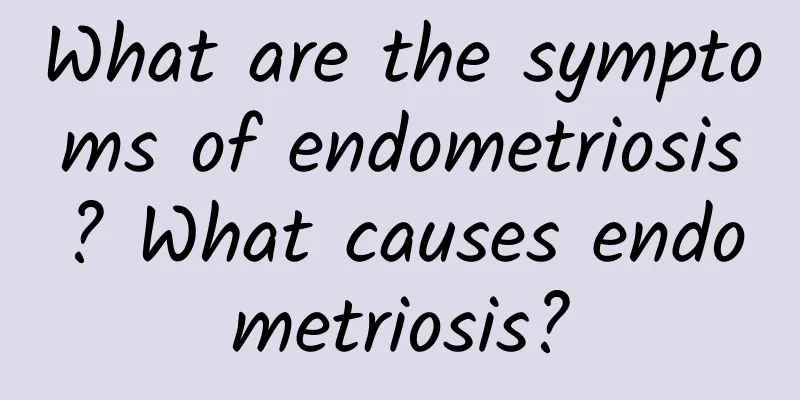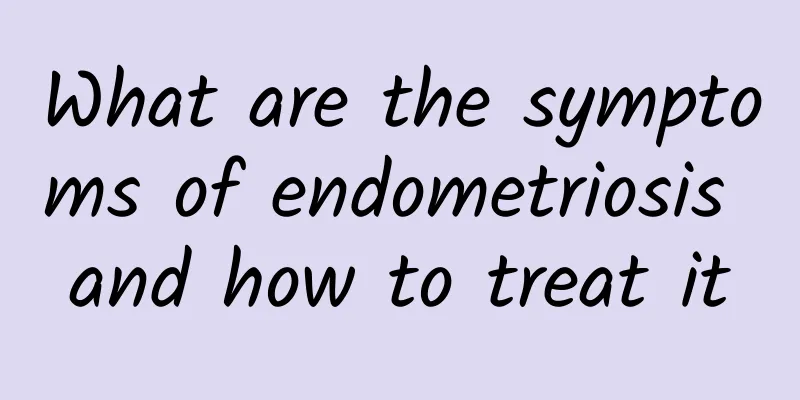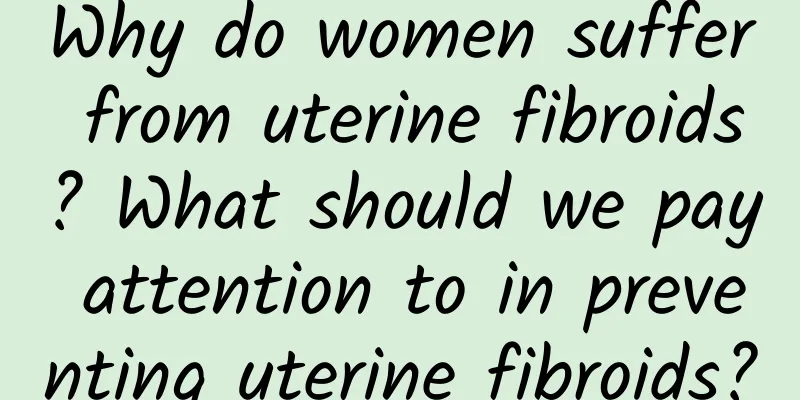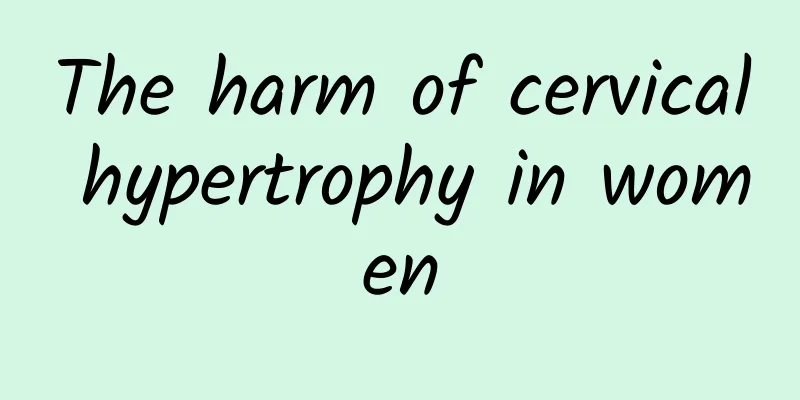What are the symptoms of endometriosis? What causes endometriosis?

|
Endometriosis is a gynecological disease that refers to the growth of tissue that should exist in the uterus outside the uterus. The main symptoms are pelvic pain and infertility. Nearly half of patients have chronic pelvic pain, and 70% of the pain occurs during menstruation. Complaints of pain during sexual intercourse are even more common. 50% of patients suffer from infertility. Endometriosis can affect the patient's social life and mind. A very small number of patients have symptoms of urination or bowel problems. About 25% of patients have no symptoms. The cause of endometriosis has not yet been determined, but risk factors include family history. Most patients will have infections and infections in the ovaries, fallopian tubes and tissues around the uterus after the disease, and even a very small number of patients will have infections in other parts of the body. There is a concern that the area where endometriosis causes monthly bleeding will be inflamed and scarred. The cell growth caused by this disease is not cancer. Diagnosis is often based on symptoms and combined with medical imaging technology. Biopsy is the most accurate of all tests.[2] Other conditions that can cause similar symptoms include irritable bowel syndrome, interstitial cystitis, and fibromyalgia. There is some experimental evidence that combined oral contraceptives can reduce the risk of developing endometriosis, as can regular exercise and avoiding alcohol. There is no specific drug for the condition, but there are a number of medical options that can help. These options include painkillers, hormonal medications, or surgery to help. Painkillers recommended are usually nonsteroidal anti-inflammatory drugs such as naproxen. Continuous use of active ingredients in birth control pills or the insertion of an intrauterine device are considered effective methods of combating endometriosis. Gonadotropin antagonists can help women who are infertile due to the condition become pregnant. For women whose symptoms cannot be controlled by medication, surgery is the only option. It is estimated that about 6-10% of women suffer from endometriosis, and most patients are women aged 30-40. There is a slight mortality rate, and in 2013, about 200 patients died. In the 1920s, it was first identified as a disease. Before that, endometriosis was considered the same as uterine adenomyoma, and there is no consensus on who was the first to clearly describe this disease. 1. Symptoms 1. Dysmenorrhea: Patients complain that they did not have pain during menstruation in the past, but began to have dysmenorrhea at a certain period. It can occur before, during and after menstruation. Some dysmenorrhea is severe and unbearable, and bed rest or medication is required for pain relief. The pain often worsens with the menstrual cycle. Due to the continuous rise in estrogen levels, the ectopic endometrium proliferates and swells. If it is affected by progesterone, it will bleed and stimulate local tissues, causing pain. If it is endogenous endometriosis, it can also cause uterine muscle contraction, and dysmenorrhea is bound to be more significant. In cases where there is no bleeding from ectopic tissue, dysmenorrhea may be caused by vascular congestion. After menstruation, the ectopic endometrium gradually shrinks and dysmenorrhea disappears. Clinically, endometriosis is significant, but about 25% of women do not have dysmenorrhea. Women's psychological state can also affect pain perception. 2. Excessive menstruation: In endometriosis, the menstrual volume often increases and the menstrual period is prolonged. It may be caused by an increase in endometrium, but it is often accompanied by ovarian dysfunction. 3. Infertility: Endometriosis patients are often accompanied by infertility. The causal relationship between infertility and endometriosis is still controversial. Pelvic endometriosis can often cause adhesions around the fallopian tubes, affecting the collection of oocytes or causing tubal lumen obstruction. Or infertility may be caused by ovarian lesions affecting the normal ovulation. However, some people believe that long-term infertility and no menstrual closure period can cause the opportunity for endometriosis; once pregnant, the ectopic endometrium is suppressed and shrinks. 4. Pain during sexual intercourse: Endometriosis that occurs in the rectouterine fossa and vaginal rectal septum causes swelling of the surrounding tissues and affects sexual life. Unpleasant sexual sensations worsen before menstruation. 5. Stool swelling: It usually occurs before or after menstruation. The patient feels unbearable pain when the stool passes through the rectum, but does not feel this at other times. It is a typical symptom of endometriosis in the rectouterine fossa and near the rectum. Occasionally, the ectopic endometrium reaches deep into the rectal mucosa, and there is rectal bleeding during menstruation. Those with endometriotic lesions that form a stenosis around the rectum have symptoms of tenesmus and obstruction, which is similar to cancer. 6. Bladder symptoms: It is more common in those with endometriosis to the bladder, with symptoms of periodic frequent urination and painful urination; when the bladder mucosa is invaded, periodic hematuria may occur. 7. Endometriosis in the abdominal wall scar and umbilicus; periodic local lumps and pain occur. Early symptoms 1) Infertility Endometriosis may cause blockage of the lumen after reaching the fallopian tube. This directly leads to infertility due to inability of the fertilized egg to pass through. 2) Dysmenorrhea Dysmenorrhea is secondary dysmenorrhea. Secondary pain is pain that usually does not occur before the onset of endometriosis, and is severe enough to affect women's normal life. 3) Increased menstruation During the menstrual cycle, it is found that the amount of menstruation has increased significantly, and the menstrual period is usually significantly prolonged, which is a symptom of endometriosis. 4) Infertility Endometriosis patients are often accompanied by infertility. 5) Bladder symptoms are usually seen in those with endometriosis reaching the bladder, with symptoms of periodic frequent urination and painful urination; when the bladder mucosa is invaded, periodic hematuria will occur. 6) Pain during sexual intercourse often occurs in endometriosis of the uterine rectal fossa and vaginal rectal septum, causing swelling of the surrounding tissues and affecting sexual life, and worsening sexual discomfort before menstruation. 7) Fecal drop usually occurs before or after menstruation. The patient feels unbearable pain when the stool passes through the rectum, but does not feel this at other times. It is a typical symptom of endometriosis in the rectouterine fossa and near the rectum. 2. Signs Peritoneal endometriosis: Peritoneal endometriosis (PEM) refers to various endometriosis lesions occurring in the peritoneum of the pelvic and abdominal cavities, mainly including red lesions (early lesions), blue lesions (typical lesions) and white lesions (old lesions). Ovarian endometriosis: Ovarian endometriosis (OEM) can form cysts, called endometriotic cysts (endometriosis cysts); according to the size of the cyst and the degree of infiltration of the ectopic lesions, it is divided into: Type I: The diameter of the cyst is 5mm, commonly found in the uterosacral ligament, rectouterine pouch, vaginal vault, rectovaginal septum, etc. There are two types of rectovaginal septum: one is pseudo-rectovaginal septum endometriosis, which is the adhesion closure of the rectouterine pouch, and the lesion is located below the adhesion; the other is true rectovaginal septum endometriosis, which is the lesion located outside the peritoneum, inside the rectovaginal septum, and there is no obvious anatomical abnormality in the rectouterine pouch. Endometriosis in other parts: Endometriosis in other parts (OtEM) can affect the digestive, urinary, and respiratory systems, and can form scar endometriosis and other rare distant endometriosis. 3. Diagnosis This disease often occurs in women aged 30 to 40 years old. The main complaint is secondary progressive severe dysmenorrhea. Endometriosis should be highly suspected. Patients are often accompanied by infertility, menorrhagia and sexual discomfort. When the uterus is slightly enlarged during gynecological examination, and nodules are touched on the uterosacral ligament or the posterior wall of the cervix, it can be diagnosed as endometriosis. When ovarian endometrioid cysts exist, bimanual examination can touch unilateral or bilateral cystic or cystic solid masses, generally within 10cm in diameter, with a sense of adhesion to the surrounding area. 1. Implantation theory Menstrual blood flows backward and endometrial implantation. During menstruation, menstrual blood is discharged from the cervix and vagina to the body and flows downstream, but a small part of the menstrual blood or other reasons are mixed with shed endometrial fragments, which flow into the abdominal cavity through the fallopian tube and implant on the surface of the pelvic organs to form endometriotic lesions. 2. Metaplastic endometrial serosal epithelium, metaplastic endometrium. During the embryonic development of the human body, the ovarian surface epithelium, peritoneum, vaginal rectal diaphragm, and umbilicus are all metaplastic from the body cavity epithelium. These tissues can be transformed under the stimulation of gonadal hormones, inflammation, and mechanical factors to form another tissue, which can also metaplasia into the endometrium. 3. Benign metastasis blood lymph, benign metastasis. This is a relatively rare cause of the disease. Endometriosis that occurs in the lungs, meninges, pericardium, limbs, and other distal parts is caused by the transfer of endometrial debris to a certain organ or tissue through the blood circulation or lymphatic system. 4. Iatrogenic endometrial transplantation This is a man-made transplantation of the endometrium to certain parts, which is more common in cesarean section, early and mid-term pregnancy curettage, episiotomy during delivery, artificial abortion, etc. 5. Defective immune defense function The endometrium that flows back into the abdominal cavity with menstrual blood is like a foreign body, which will activate the body's immune system and mobilize a large number of immune cells and body fluids to encircle and eliminate it. If the body's immune function is defective, it will develop into endometriosis. 6. Endocrine dysfunction. Regardless of the source, the growth and changes of ectopic endometrium are related to ovarian endocrine. Estrogen can promote growth, while progesterone can inhibit it. Clinically, most patients are found to be deficient in progesterone, which contributes to the occurrence and development of this disease. 7. Genetic and physical factors. Clinical observations have found that most people with a family history of this disease suffer from this disease. Physical factors such as obesity, overweight, and excessive height also have a certain relationship. 1. Avoid unnecessary, repeated or overly rough gynecological bimanual examinations near the menstrual period to avoid squeezing the endometrium into the fallopian tube and causing abdominal implantation. 2. Gynecological surgery should be avoided as much as possible near the menstrual period. When it must be performed, the operation should be gentle during the operation to avoid squeezing the uterine body, otherwise the endometrium may be squeezed into the fallopian tube and the abdominal cavity. 3. Timely correction of excessive retroflexed uterus and cervical canal stenosis to ensure smooth drainage of menstrual blood and avoid stagnation and reflux. 4. Strictly follow the operating procedures of the fallopian tube patency test (ventilation, fluid flow) and angiography. Do not perform the test just after menstruation or directly during the curettage cycle to avoid pressing endometrial fragments into the abdominal cavity through the fallopian tube. 5. During cesarean section and cesarean section, care should be taken to prevent the contents of the uterine cavity from overflowing into the abdominal cavity. When suturing the uterine incision, do not allow the suture to pass through the endometrial layer. Before suturing the abdominal wall incision, use normal saline to flush to prevent endometrial implantation. Due to the many causes, the above-mentioned preventive advice is only applicable to a few cases. Whether the menstrual backflow itself causes endometriosis is still controversial. General treatment 1. Western medicine treatment of endometriosis 1. Hormone treatment (I) Danazol: It is a derivative of the synthetic steroid α-ethynyltestosterone. Its main function is to inhibit the production of hypothalamic GnRH, thereby reducing the synthesis and release of FSH and LH, resulting in suppressed ovarian function. It can also directly inhibit the synthesis of ovarian steroid hormones or competitively bind to estrogen and progesterone receptors, thereby leading to atrophy of ectopic endometrium, anovulation and amenorrhea. Danazol also has a mild androgenic effect, producing masculine manifestations such as increased hair growth, deepening of the voice, smaller breasts and the appearance of acne. Another common side effect of danazol is water retention and weight gain. It is not suitable for people with hypertension, heart disease or renal insufficiency. Danazol is mainly metabolized by the liver and may cause certain damage to liver cells, so it is contraindicated for women with liver disease. The commonly used dose is 400 mg/d, 2 to 4 times orally, starting from menstruation, and symptoms are generally relieved in about 1 month. If ineffective, it can be increased to 600 to 800 mg/d, and then gradually reduced to 400 mg/d after the effect is achieved. The course of treatment is generally 6 months, and 90% to 100% of patients achieve the effect of amenorrhea. Danazol has a good effect on endometriosis of the pelvic peritoneum, but a poor effect on ovarian ectopic masses with a diameter greater than 1 cm. (ii) Nemestran: 3-ene-gostyrone (R2323), a 19-nortestosterone derivative, has high anti-progestin activity and moderate anti-estrogen effect, inhibits the secretion of FSH and LH, reduces the estrogen level in the body, and causes atrophy and absorption of ectopic endometrium. (iii) Gonadotropin-releasing hormone agonist (GnRHa): In 1982, Meldtum and Lemay reported that the use of LHRHa to treat endometriosis achieved good results. LHRH has a biphasic effect on the pituitary gland. Large amounts of continuous use of LHRH cause pituitary cells to show a down-regulatory response, that is, the pituitary cell receptors are filled with hormones and cannot synthesize and release FSH and LH, which plays a counter-regulatory role. Side effects include hot flashes, vaginal dryness, headaches, and a small amount of vaginal bleeding. (iv) Tamoxifen (TMX): It is a diphenylethylene derivative. The dose is 10 mg/d, starting on the fifth day of menstruation, and 20 days is a course of treatment. (V) Synthetic progesterone: Ethinyl isoprogesterone, norethindrone or medroxyprogesterone acetate (medroxyprogesterone acetate) can be used for cyclical treatment to degenerate the ectopic endometrium. From the sixth day of the menstrual cycle to the twenty-fifth day, take 5-10 mg of one of the above drugs orally every day. The course of treatment depends on the treatment effect. This method can inhibit ovulation. Therefore, for those who want to have children, 10 mg of Ethinyl isoprogesterone or norethindrone can be used daily from the sixteenth day of the menstrual cycle to the twenty-fifth day. This can control endometriosis without affecting ovulation. Some cases have more serious side effects during the treatment period, such as nausea, vomiting, headache and swelling, uterine cramps, breast pain, and excessive weight gain due to water retention and improved appetite. Sedatives, antiemetics, diuretics and low-salt diet can alleviate them. Testosterone: It also has a certain effect on this disease. The dosage should be determined according to the patient's tolerance. The best starting dose is 10 mg, twice a day, and oral administration starts 2 weeks after the menstrual cycle. This dose rarely affects the menstrual cycle and causes masculinization side effects. However, it is often necessary to continue taking it for several cycles to achieve the purpose of pain relief. After that, the dose can be reduced and maintained for a period of time, and then the drug can be stopped for observation. If pregnancy can be achieved, the disease can be cured. 2. Surgical treatment Surgical treatment is the main method for endometriosis, because the scope and nature of the lesions can be basically determined under direct vision, and it is effective in relieving pain and promoting reproductive function. The course of treatment is short, especially for severe cases with more fibrosis and tight adhesions, and drugs are not easy to work. For larger ovarian endometrioid cysts, drug treatment is ineffective, and surgery may still preserve effective ovarian tissue. Surgery can be divided into three types: conservative surgery, semi-radical surgery and radical surgery. (I) Conservative surgery: mainly used for young people with fertility requirements. The uterus and appendages are retained (try to retain both sides), and only the lesions are removed, adhesions are separated, the ovaries are reconstructed, and tissues are repaired. In recent years, microsurgery has been used to remove ectopic lesions, carefully suture the wound surface, reconstruct the pelvic peritoneum, carefully stop bleeding, and thoroughly flush, so that the surgical effect is perfect, the success rate of pregnancy after surgery is improved, and the recurrence rate is reduced. 1. Laparoscopic surgery: Through laparoscopic examination, the diagnosis can be clearly determined, and specially designed knives, scissors, forceps, etc. can be used to remove lesions and separate adhesions. Under laparoscopy, CO2 laser or helium-neon laser can be used to cauterize the lesion, that is, a second incision is made 2 cm above the pubic symphysis, and the laser knife enters the pelvic cavity through the cannula of this incision, and the lesion is cauterized under direct laparoscope vision. The cyst fluid can also be aspirated through laparoscopic puncture, then rinsed with saline, and then injected with 5-10 ml of anhydrous ethanol, fixed for 5-10 minutes and then aspirated, and finally rinsed with saline and aspirated. Under laparoscopy, a fallopian tube permeability test can also be performed. 2. Puncture of ovarian endometrioid cyst under B-ultrasound: For cases of recurrence after surgical dissection or laparoscopic puncture, ultrasound puncture and drug treatment can be considered. 3. Conservative laparotomy: It is used for patients with more severe lesions and adhesions, especially in medical institutions without laparoscopic equipment or those who are not proficient in laparoscopy. Laparotomy can be performed to separate adhesions and remove ovarian endometrioid cysts, and preserve normal ovarian tissue as much as possible. If the lesion is limited to one side and is severe, and the other side is normal, some people advocate the removal of the diseased side. The pregnancy rate is higher than that after retaining the diseased ovary. Simple uterine suspension can also be performed. Whether to perform presacral nerve resection is worth discussing. One of the important purposes of conservative surgery is to hope for full-term pregnancy and delivery, so a thorough infertility examination should be conducted on both husband and wife before surgery. Those who relapse after surgery can still undergo conservative surgery again and still achieve therapeutic effects. (ii) Semi-radical surgery: There is no requirement for fertility, the lesion is severe, and the patient is young ( |
>>: How much harm does a miscarriage do to women? What are the symptoms of a miscarriage?
Recommend
How to diagnose menopause?
Women in menopause are affected by many factors, ...
What medicine can I take for a 6.0 uterine fibroid? What medicine can I take to eliminate a 6 cm uterine fibroid?
"What medicine can I take for a 6.0 uterine ...
What are the causes of ovarian cysts?
What are the causes of ovarian cysts? What are th...
What to do if endometrial polyps recur for the second time
The recurrence of endometrial polyps can be treat...
Can I have children if I have cervical warts?
Cervical warts often coexist with other sexually ...
Will pelvic effusion cause back pain?
Pelvic effusion refers to the presence of inflamm...
What are the early signs of ovarian cysts?
What are the early signs of ovarian cysts? The ea...
How much does it cost to treat uterine fibroids? Common symptoms of uterine fibroids
First of all, you should know that there are many...
What medicine can be used to treat uterine fibroids?
What medicine can be used to treat uterine fibroi...
There are some dietary precautions to get rid of chronic bronchitis
Chronic bronchitis refers to a chronic nonspecifi...
Can you get pregnant with premature ovarian failure?
Premature ovarian failure refers to the early dec...
Big ass as a table beautiful big ass woman earns 830,000
Is it possible to make a lot of money just by rel...
Authoritative hospital for the treatment of cervical precancerous lesions
With the rapid speed of media communication, the ...
Say goodbye to edema! 2 Yoga moves to slim your butt and legs
Supermodel Wang Liya shares some yoga stretching ...
What medicine to take to prevent miscarriage
What medicine should be taken to prevent miscarri...









